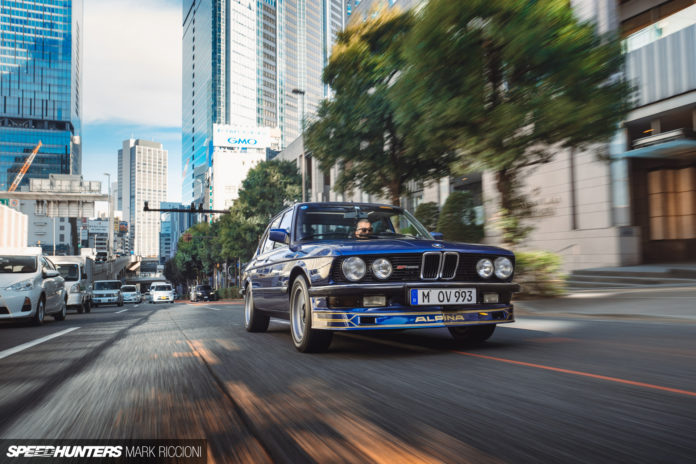The further removed we become from the automotive ‘forum era’, a little more of my soul dies.
Growing up, message boards played such an integral part in my life as a car enthusiast that it’s hard to admit that they’re about as relevant today as the hard copy encyclopedias popular up until the 1990s.
My first car was a 1985 BMW 325e, which as far as E30s go was nothing remarkable. ‘Etas’ (or ‘e’ models) were six-cylinder economy variants of the E30 series, and only a marginal upgrade from four cylinder 318 cars.

However, this 325e was mine, and in short order I found myself with a username and password for all the popular BMW message boards at the time – R3VLimited, E30sport, Dtmpower, Maxbimmer and Bimmer Forums to name a few. I used these forums to seek out all the used parts I could afford as a teen with a back-of-house restaurant job.

At the time, ‘Kopis’ were an extremely popular wheel choice for E30s. They were known as Kopis because they were upsized replicas of the wheels that came on Alpina E30s. Those wheels became my first introduction to the legendary BMW modifier Alpina Burkard Bovensiepen GmbH & Co. KG – Alpina for short.

Alpina has been responsible for some of the most memorable BMW-based production cars to have ever hit the streets. They are still at it today, but what they achieved with BMWs from the 1980s and ’90s is particularly noteworthy to rad era fans like myself.

The family-owned company was established in 1965 via a backyard shop in Kaufbeuren, Germany. Performance was Alpina’s focus right out of the gate, and their earliest triumphs involved squeezing as much power as possible from carbureted BMW engines.
Headed today by Burkard, Andreas and Florian Bovensiepen, performance and continuation of the quality that Alpina built its name on remains the company’s driving focus.

Almost instantly, Alpina proved to be rather successful at making BMWs better both on the track and on the street. In 1970, Alpina cars won several championships in touring, hill climb and rally series.
Later, in 1983, Alpina became recognized as an automobile manufacturer. Deciphering European car manufacturing regulations is not my strong suit, but nevertheless, this arrangement means that Alpina vehicles are registered as Alpinas and not BMWs.

This isn’t just a technical workaround. To live up to their philosophy of engineering high-end vehicles, each Alpina is a hand-built effort. Every year, between 1,200 and 1,800 cars are built and shipped worldwide.

Authentic models are given an Alpina-specific VIN and individual production plaque in the interior.

Alpina released the BMW E28 5 Series-based B7 Turbo/1 in 1984, and it was the fastest four-door saloon in production until 1987.

Following their ‘form over function’ principal, modifications started under hood, where the E28 3.5L six cylinder engine was equipped with a Kühnle, Kopp & Kausch K27 turbocharger. A modified cylinder head, Alpina camshaft and lightweight, lower-compression Mahle pistons were also part of the upgraded engine package.

Boost pressure was controlled manually via a tap located near the Alpina-badged, hand-stitched steering wheel. In full party mode (read: with full boost), the engine could make up to 320hp and almost 400ft/lb of torque. To put things into perspective, decades later the 1998-2003 BMW M5 had a factory-rated maximum torque figure of 369ft-lb.

The B7 Turbo/1’s interior included the aforementioned hand-stitched steering wheel, plus an Alpina shift knob and new gauges to monitor what was going on under the hood. Custom Alpina seats were also included.

From a visual standpoint, a larger front air dam sat beneath Euro-spec bumpers. There was also a rear spoiler and of course Alpina-specific wheels.
Alpina stripes are rather well-known among the BMW community, yet they are surprisingly optional on all Alpina cars. That said, it is relatively uncommon to see an Aplina without the signature stripes in place.

The cars were slightly lower than factory models due to the addition of a Bilstein suspension package. Girling disc brakes were also part of Alpina’s prescribed list of modifications.

During its run, a total of 278 Alpina B7 Turbo/1s were produced. As a fun yet practical sedan, examples ended up all over the world – including Japan.

That brings us to ‘MOV993′, which belongs to Toshio Shizu. Shizu-san is no stranger to Speedhunters; in 2020 we featured his gorgeous BMW 2002 Turbo.
While Mark was shooting the 2002, Shizu-san casually revealed that he was president of the Japan Alpina Owner’s Club. He also offered up the opportunity to capture his B7 Turbo/1, should it be of interest.

Obviously, given the performance and rarity of these cars, Mark was more than a little interested. Shinzo-san’s example is 99% stock and it could be argued that it looks all the better for it. On Japanese streets, this B7 Turbo/1 stands out for its uniqueness.
BMW’s early styling, hinging around then large but now comparatively quite small kidney grills and quad headlights is incredibly timeless. As much as I’ve admitted to not being completely turned off by BMW’s current aesthetic, my heart truly lies with the classic design.

Thanks to groups like the Japan Alpina Owner’s Club and custodians like Shinzo-san, these remarkable cars will continue to live on for us to enjoy. If only the same could be said about automotive message boards…
Dave Thomas
Instagram: stanceiseverythingcom
Photography by Mark Riccioni
Instagram: mark_scenemedia









